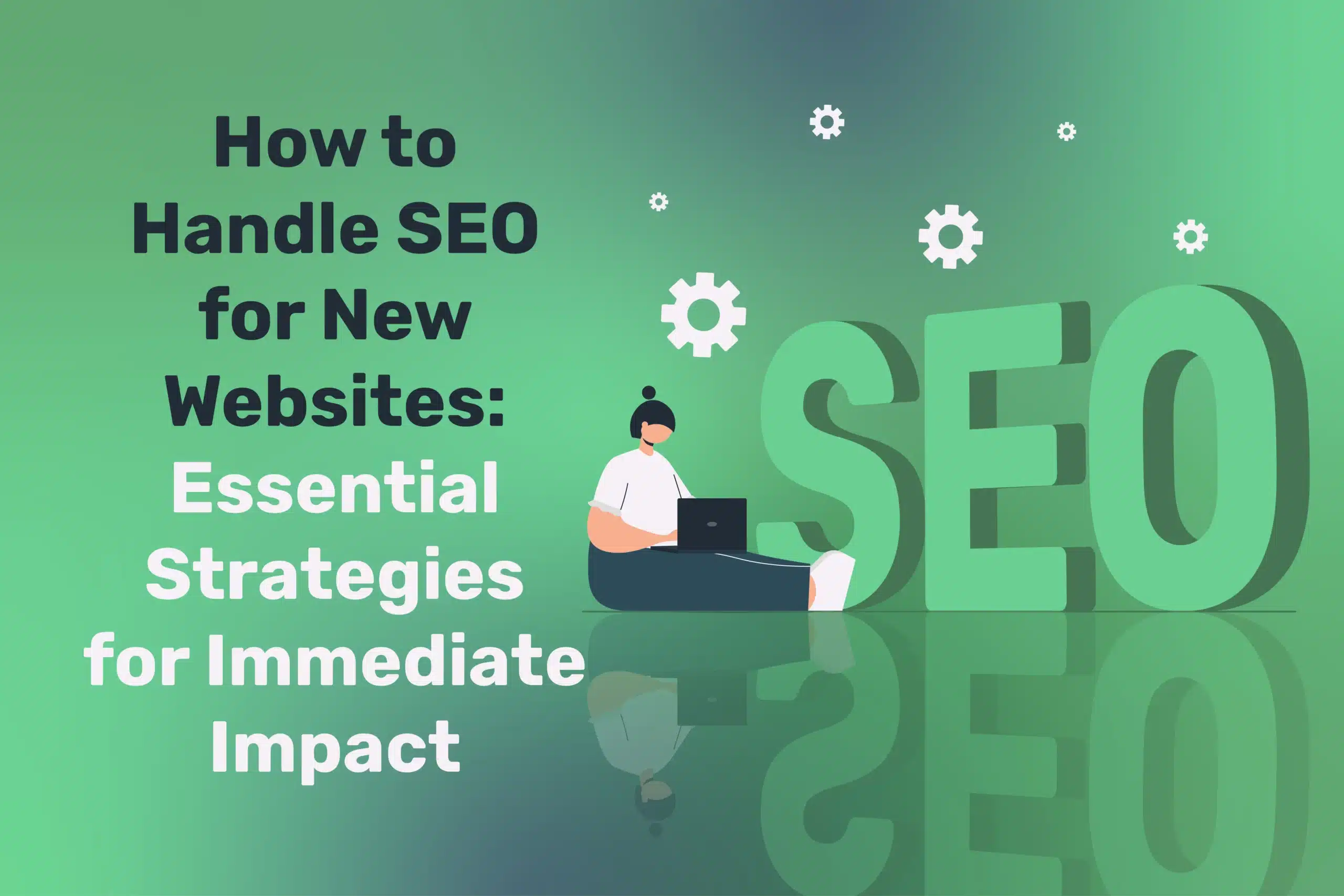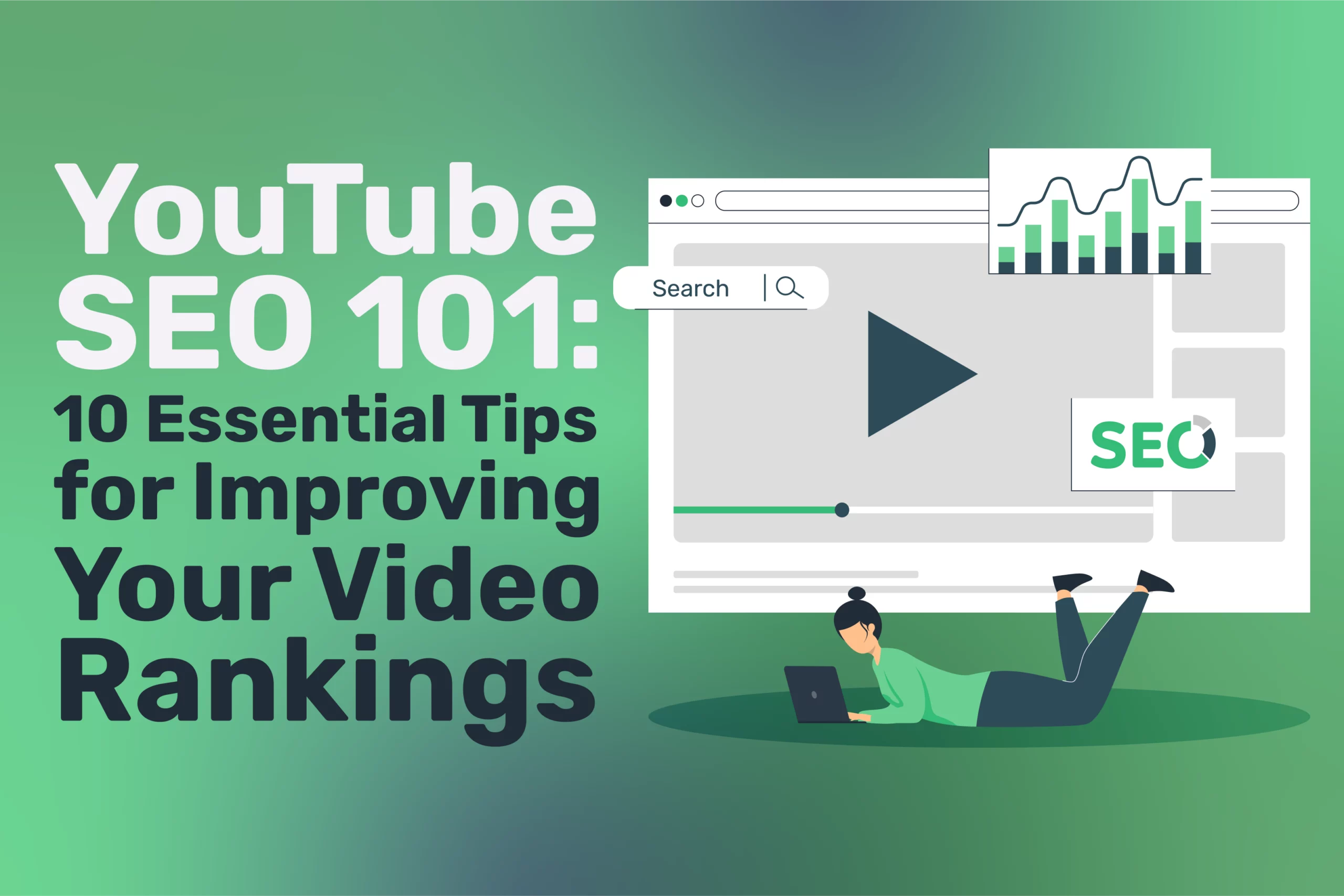5 Core Web Vitals: Practical Improvements for SMEs in Ireland and the UK
Understanding Core Web Vitals involves looking closely at a set of specific factors that Google deems crucial to the overall user experience on a webpage. These factors reflect how quickly content loads, how soon a user can interact with the site, and how stable the layout stays during that interaction.
For small and medium-sized enterprises (SMEs) in Ireland and the UK, paying attention to these metrics has never been more critical. By optimising Core Web Vitals, businesses can enhance both their visibility in search results and the overall experience they offer to visitors, thereby building credibility and trust.
These metrics home in on three essential elements of user experience: loading performance, interactivity, and visual stability. Google now uses them as direct ranking signals, meaning sites that excel in Core Web Vitals are more likely to reach a wider audience and stay competitive online.
The Three Core Web Vitals Explained
Understanding how your website performs isn’t just about speed — it’s about user experience. Google’s Core Web Vitals are a set of key performance metrics that reflect how real users interact with your site. Let’s break down the three Core Web Vitals—Largest Contentful Paint (LCP), First Input Delay (FID), and Cumulative Layout Shift (CLS)—explaining what they measure, why they matter for SEO, and how you can optimise them.
Largest Contentful Paint (LCP)
Largest Contentful Paint (LCP) measures loading performance. It marks the point when the largest content element in the viewport becomes visible to the user. For optimal user experience, LCP should occur within 2.5 seconds of when the page first starts loading.
First Input Delay (FID) measures interactivity. It quantifies the time from when a user first interacts with your site (e.g., clicks a link or taps a button) to the time when the browser is actually able to respond to that interaction. For good user experience, pages should have an FID of less than 100 milliseconds.
Cumulative Layout Shift (CLS)
Cumulative Layout Shift (CLS) measures visual stability. It quantifies the amount of unexpected layout shift of visible page content. For good user experience, pages should maintain a CLS of less than 0.1.
Why Core Web Vitals Matter for SMEs
For SMEs in competitive markets across Ireland and the UK, Core Web Vitals optimisation offers several critical advantages:
- SEO Performance Improvement: Google explicitly uses Core Web Vitals as ranking signals, meaning better metrics can lead to higher positions in search results.
- Enhanced User Experience: Enhanced User Experience Beyond SEO benefits, optimised Core Web Vitals deliver a smoother, more responsive experience that reduces frustration and increases engagement.
- Mobile User Retention: With mobile traffic accounting for over 60% of web visits in the UK and Ireland, performance metrics significantly impact whether users stay or leave.
- Competitive Edge: Competitive Edge Many local competitors may not yet prioritise these technical aspects, creating an opportunity for market differentiation.
- Conversion Rate Optimisation: Faster, more stable websites typically convert better, directly impacting your bottom line through improved sales and lead generation.
Research from the UK Retail Consumer Report shows that 53% of mobile site visits are abandoned if pages take longer than 3 seconds to load, highlighting the direct business impact of performance optimisation.
Before implementing improvements, you need to establish your website’s current performance baseline.
- Google PageSpeed Insights: Provides an overall performance score along with specific Core Web Vitals measurements for both mobile and desktop versions of your site.
- Google Search Console: Offers a dedicated Core Web Vitals report that identifies groups of pages that require attention.
- Lighthouse: Available in Chrome DevTools, this provides detailed audit reports and specific recommendations for improvement.
- Web Vitals Chrome Extension: A simple tool that displays Core Web Vitals metrics in real-time as you browse your site.
- GTmetrix: Provides comprehensive performance reports with actionable recommendations.
Establishing a Measurement Protocol
For consistent and meaningful measurement:
- Check multiple pages, not just your homepage
- Test both mobile and desktop experiences separately
- Consider using real-user monitoring for more accurate data
- Create a performance benchmark document to track progress
- Schedule regular monitoring (at least monthly)
Practical Improvements for Largest Contentful Paint (LCP)
LCP is typically affected by four factors: server response times, render-blocking JavaScript and CSS, resource load times, and client-side rendering. Here are practical steps to improve each area:
Optimising Server Response Time
- Upgrade Hosting if Necessary: Many SMEs start with basic shared hosting. Consider upgrading to VPS (Virtual Private Server) or dedicated hosting if your traffic warrants it. UK and Ireland-based hosting providers often offer better response times for local audiences.
- Implement Caching: Server-side caching reduces database queries and dynamic content generation:
# Example for WordPress sites using .htaccess
<IfModule mod_expires.c>
ExpiresActive On
ExpiresByType image/jpg “access plus 1 year
ExpiresByType image/jpeg “access plus 1 year”
ExpiresByType image/gif “access plus 1 year”
ExpiresByType image/png “access plus 1 year”
ExpiresByType text/css “access plus 1 month”
ExpiresByType application/pdf “access plus 1 month”
ExpiresByType text/javascript “access plus 1 month”
ExpiresByType application/javascript “access plus 1 month”
ExpiresByType application/x-javascript “access plus 1 month”
ExpiresByType application/x-shockwave-flash “access plus 1 month”
ExpiresByType image/x-icon “access plus 1 year
ExpiresDefault “access plus 2 days”
</IfModule>
- Utilise CDNs: Content Delivery Networks like Cloudflare, StackPath or BunnyCDN can significantly reduce server response times by caching content closer to your users across the UK and Ireland.
- Optimise Database Queries: For database-driven sites, review and optimise your most frequent queries: Remove unnecessary queries, Add appropriate indexes to database tables,Cache database query results when possible
Eliminating Render-Blocking Resources
- Defer Non-Critical JavaScript: Move non-essential JavaScript that isn’t needed for initial content display to load after critical content:
<!– Example of deferring JavaScript –>
<script src=”non-critical-script.js” defer></script>
<head>
<style>
/* Critical CSS here */
header { background-color: #fff; padding: 20px; }
.hero { font-size: 2em; color: #333; }
</style>
<link rel=”stylesheet” href=”main.css” media=”print” onload=”this.media=’all'”>
</head>
- Preconnect to Required Origins: Establish early connections to important third-party domains:
<link rel=”preconnect” href=”https://fonts.googleapis.com”>
<link rel=”preconnect” href=”https://analytics.google.com”>
Optimising Resource Load Times
Image Optimisation: Implement next-gen formats and proper sizing:
<!– Example of responsive images with WebP format –>
<picture>
<source srcset=”image.webp” type=”image/webp”>
<source srcset=”image.jpg” type=”image/jpeg”>
<img src=”image.jpg” alt=”Description” width=”800″ height=”600″ loading=”lazy”>
</picture>
Font Optimisation:
- Limit font variations (weights and styles)
- Use font-display: swap to prevent font-based render blocking
- Consider system fonts for non-brand elements
/* Example of optimised font loading */
@font-face {
font-family: ‘CustomFont’;
src: url(‘/fonts/CustomFont.woff2’) format(‘woff2’);
font-display: swap;
font-weight: 400;
}
CSS and JavaScript Minification: Reduce file sizes by removing unnecessary characters:
- Use tools like Terser for JavaScript
- Use CSSNano or CleanCSS for CSS files
- Enable compression (Gzip or Brotli) on your server
Improving Client-Side Rendering
- Consider Server-Side Rendering: For JavaScript-heavy applications, server-side rendering can improve initial load time.
- Implement Incremental Loading: Break down large applications to load core functionality first, then progressively enhance.
- Critical Rendering Path Optimisation: Structure HTML to prioritise visible content.
FID measures how responsive your page is when users try to interact with it. Here’s how to improve this metric:
Reducing JavaScript Execution Time
- Break Up Long Tasks: Split JavaScript tasks into smaller chunks that take less than 50ms each to execute:
// Before: Long task
function processAllItems(items) {
items.forEach(item => {
// Heavy processing
});
}
// After: Split into smaller chunks
function processItemsInChunks(items, chunkSize=50) {
let index = 0;
function processChunk() {
const chunk = items.slice(index, index + chunkSize);
if (chunk.length === 0) return;
chunk.forEach(item => {
// Heavy processing
});
index += chunkSize;
setTimeout(processChunk, 0);
}
processChunk();
}
- Use Web Workers: Offload heavy computational tasks to background threads:
// Main thread
const worker = new Worker(‘processor.js’);
worker.postMessage({data: complexData});
worker.onmessage = function(e) {
const result = e.data;
updateUI(result);
};
// processor.js (Worker thread)
self.onmessage = function(e) {
const data = e.data;
const result = performComplexCalculation(data);
self.postMessage(result);
};
- Optimise Third-Party Scripts: Audit and reduce the impact of external scripts:
- Remove unnecessary third-party scripts
- Load analytics and tracking scripts with lower priority
- Consider self-hosting critical third-party resources
Optimising JavaScript Loading
- Code Splitting: Divide your JavaScript bundles to load only what’s needed:
// Example using dynamic imports
button.addEventListener(‘click’, async () => {
const module = await import(‘./feature.js’);
module.default();
});
<form action=”/submit” method=”post”>
<!– Form works without JS –>
<script>
// Enhance with JS when available
document.querySelector(‘form’).addEventListener(‘submit’, async (e) => {
e.preventDefault();
// Enhanced submission with feedback
});
</script>
</form>
Addressing Cumulative Layout Shift (CLS)
CLS measures visual stability. Here’s how to reduce unexpected layout shifts:
- Always Specify Dimensions: Include width and height attributes on images and video elements:
<img src=”product.jpg” width=”640″ height=”480″ alt=”Product description”>
- Use Aspect Ratio Boxes: Maintain space for elements that load dynamically:
.video-container {
position: relative;
width: 100%;
padding-top: 56.25%; /* 16:9 Aspect Ratio */
}
.video-container iframe {
position: absolute;
top: 0;
left: 0;
width: 100%;
height: 100%;
}
Managing Dynamic Content
- Reserve Space for Ads and Embeds: Allocate space in advance for content that loads dynamically:
.ad-slot {
min-height: 250px;
width: 100%;
}
- Avoid Inserting Content Above Existing Content: Add new content below the viewport whenever possible.
- Use Transform Animations: CSS transforms don’t cause layout shifts, unlike changing position properties:
/* Poor for CLS – causes layout shifts */
@keyframes bad-animation {
from { margin-top: 0; }
to { margin-top: 20px; }
}
/* Good for CLS – uses transform */
@keyframes good-animation {
from { transform: translateY(0); }
to { transform: translateY(20px); }
}
Font Loading Strategy
- Preload Important Fonts: Critical fonts should be preloaded:
<link rel=”preload” href=”/fonts/brand-font.woff2″ as=”font” type=”font/woff2″ crossorigin>
- Set Font-Display Property: Use font-display: optional for non-essential fonts or font-display: swap with similar fallback fonts:
@font-face {
font-family: ‘BrandFont’;
src: url(‘/fonts/brand-font.woff2’) format(‘woff2’);
font-display: swap;
}
body {
font-family: ‘BrandFont’, Arial, sans-serif;
}
WordPress Optimisation
Many SMEs in Ireland and the UK use WordPress for their websites. Here are specific techniques for this platform:
Essential Plugins:
- WP Rocket or Autoptimise for comprehensive performance optimisation
- EWWW Image Optimiser or ShortPixel for image compression
- Perfmatters for script management
- Flying Pages for preloading pages
Theme Considerations:
- Use lightweight themes built for performance (GeneratePress, Astra)
- Consider Gutenberg-optimised themes for better content rendering
- Avoid multipurpose themes with excessive features you don’t need
Database Optimisation:
- Regularly clean up post revisions, spam comments, and transients
- Optimise database tables with plugins like WP-Optimize
- Consider object caching with Redis or Memcached for high-traffic sites
Shopify Optimisation
For e-commerce businesses using Shopify:
Theme Optimisation:
Image Handling:
- Use Shopify’s built-in image optimisation
- Implement lazy loading for product images
- Consider using fewer images on collection pages
App Management:
- Regularly audit installed apps
- Remove unused or duplicate functionality apps
- Prioritise apps from Shopify Plus partners which tend to be better optimised
Wix and Squarespace Considerations
For businesses using website builders:
Wix:
- Use the Wix Site Speed Dashboard to identify issues
- Optimise images before uploading them
- Minimise the use of animations and complex interactions
- Consider Wix Velo for more control over performance factors
Squarespace:
- Choose simpler templates with fewer animations
- Reduce custom code injections when possible
- Optimise images before uploading
- Use AMP for blog pages when applicable
Common Issues and Troubleshooting
Improving Core Web Vitals often comes down to resolving a handful of recurring technical issues. From heavy scripts to layout instability, understanding these common pitfalls—and how to troubleshoot them—is key to delivering a fast, stable, and responsive user experience.
Before fixing any Core Web Vitals issues, it’s crucial to diagnose where the problems lie. Using Chrome DevTools, you can gain clear visibility into what’s slowing down your site. From long JavaScript tasks to slow-loading assets and unexpected layout shifts, identifying these bottlenecks helps you focus your optimisation efforts where they’ll have the greatest impact.
When addressing poor Core Web Vitals, use this systematic approach:
- Run Lighthouse in Chrome DevTools and review opportunities and diagnostics
- Check Waterfall Charts in the Network tab to identify slow-loading resources
- Review JavaScript Execution in the Performance tab to find long tasks
- Analyse Layout Shifts using the Layout Shift Regions option in Chrome DevTools
Resolving Common Problems
Once you’ve pinpointed the performance issues, the next step is to apply targeted solutions. Below are some of the most frequent problems that impact Core Web Vitals, along with actionable techniques to resolve them effectively.
Large JavaScript Bundles
- Use code-splitting to break up large bundles
- Implement tree-shaking to eliminate unused code
- Consider using smaller, more focused libraries
Oversized Images
- Implement a responsive image strategy
- Use modern formats like WebP with fallbacks
- Consider using an image CDN with automatic optimisation
Render-Blocking Resources
- Move non-critical CSS to separate files loaded asynchronously
- Defer or async load non-essential JavaScript
- Inline critical CSS for above-the-fold content
Layout Shifts from Dynamically Loaded Content
- Implement content placeholders or skeleton screens
- Pre-calculate and reserve space for dynamic elements
- Use CSS containment to isolate components
Implementation Strategy for SMEs
Implementing Core Web Vitals improvements requires a structured approach, especially for resource-constrained SMEs:
Prioritisation Framework
Start with “Quick Wins”: Focus first on issues that can be resolved quickly with high impact:
- Image optimisation
- Enable caching
- Fix obvious layout shift issues
Address Critical Issues: Tackle problems directly affecting user experience:
- Fix severe CLS issues on frequently visited pages
- Reduce server response time if exceeding thresholds
- Optimise JavaScript for high-interaction pages
Implement Structural Improvements: Make fundamental changes for long-term benefits:
- Redesign problematic page elements
- Restructure how resources are loaded
- Consider upgrading hosting or implementing a CDN
Implementation Timeline for SMEs
Week 1-2: Analysis and Planning
Week 3-4: Quick Wins Implementation
- Optimise all images
- Set up basic caching
- Fix simple CLS issues
- Remove unnecessary plugins or scripts
- Implement critical CSS strategies
- Optimise font loading
- Address server response time issues
- Set up a CDN if needed
Week 7-8: Advanced Optimisation
- Implement JavaScript optimisations
- Refine lazy loading strategies
- Restructure problematic page layouts
- Optimise third-party scripts
Ongoing Maintenance
Measuring Success and Ongoing Optimisation
Optimising Core Web Vitals isn’t a one-time task — it requires continuous monitoring and refinement. Use tools like Google Search Console, PageSpeed Insights, and field data from the Chrome User Experience Report to track improvements over time. Regular audits and performance reviews help ensure your site maintains a high standard of user experience and keeps up with evolving performance benchmarks.
Track these metrics to measure the success of your Core Web Vitals optimisation efforts:
Continuous Improvement Process
Establish a routine for ongoing performance optimisation:
Expert Insight
Core Web Vitals optimisation is not a one-time task but an ongoing commitment to delivering exceptional user experiences. For SMEs in Ireland and the UK, these performance metrics directly impact both search visibility and conversion rates. The businesses we see achieving the greatest success are those that integrate performance considerations into their regular workflows rather than treating it as a separate project.” – Ciaran Connolly, Director of ProfileTree
Practical Checklist for SME Website Owners
Use this checklist to ensure you’ve covered the essential aspects of Core Web Vitals optimisation:
LCP Optimisation Checklist
- [ ] Optimised all images (size, format, compression)
- [ ] Implemented responsive images with proper dimensions
- [ ] Set up server-side caching
- [ ] Eliminated render-blocking resources
- [ ] Minified CSS and JavaScript
- [ ] Implemented critical CSS for above-the-fold content
- [ ] Set up a CDN for static assets
- [ ] Preloaded critical resources
FID Optimisation Checklist
- [ ] Minimised main thread work
- [ ] Broken up long JavaScript tasks
- [ ] Reduced JavaScript execution time
- [ ] Deferred non-critical JavaScript
- [ ] Optimised third-party scripts
- [ ] Implemented code splitting
- [ ] Used web workers for complex tasks when appropriate
CLS Optimisation Checklist
- [ ] Added dimensions to all images and video elements
- [ ] Reserved space for dynamic content
- [ ] Optimised font loading to prevent layout shifts
- [ ] Avoided inserting content above existing content
- [ ] Used transform instead of properties that trigger layout changes
- [ ] Fixed any issues with dynamically injected content
Measurement and Monitoring Checklist
Conclusion
Optimising Core Web Vitals represents a significant opportunity for SMEs in Ireland and the UK to improve both their search visibility and user experience. By systematically addressing the technical aspects of LCP, FID, and CLS, businesses can achieve measurable improvements in website performance that translate directly to better business outcomes.
The most successful approach combines quick wins for immediate impact with strategic, longer-term improvements to your website’s fundamental structure and loading patterns. By making performance optimisation an ongoing part of your digital strategy rather than a one-time project, you can maintain and build upon your gains even as your website evolves.
For SMEs navigating these technical challenges, partnering with experienced professionals can accelerate results and ensure optimisations are implemented correctly. ProfileTree specialises in helping businesses across Ireland and the UK achieve exceptional website performance through comprehensive Core Web Vitals optimisation, delivering measurable improvements in search visibility and user experience.





